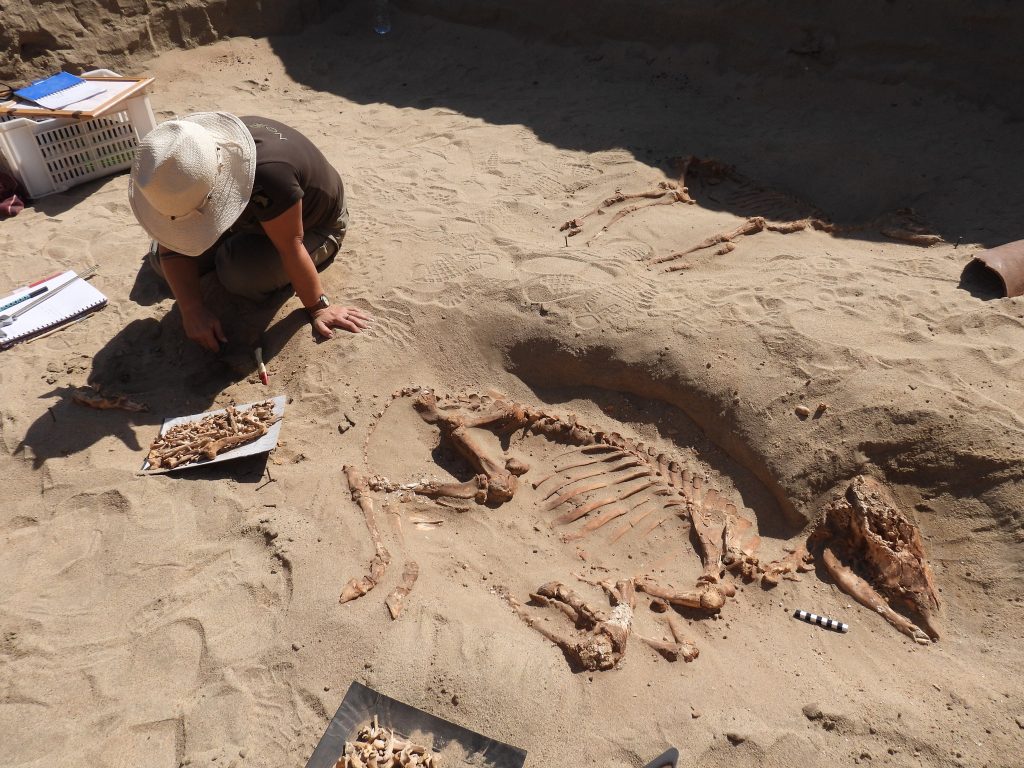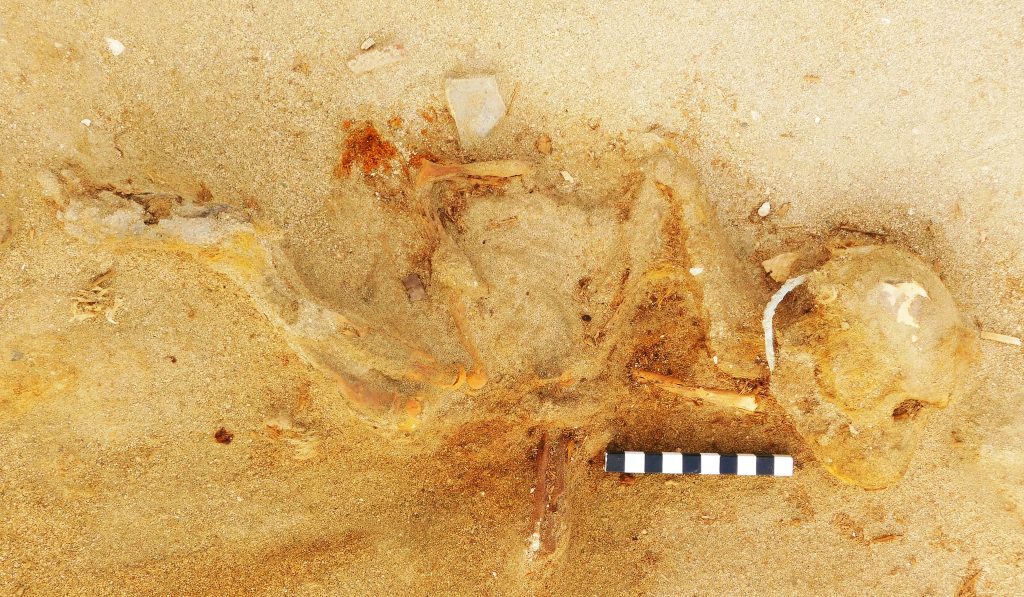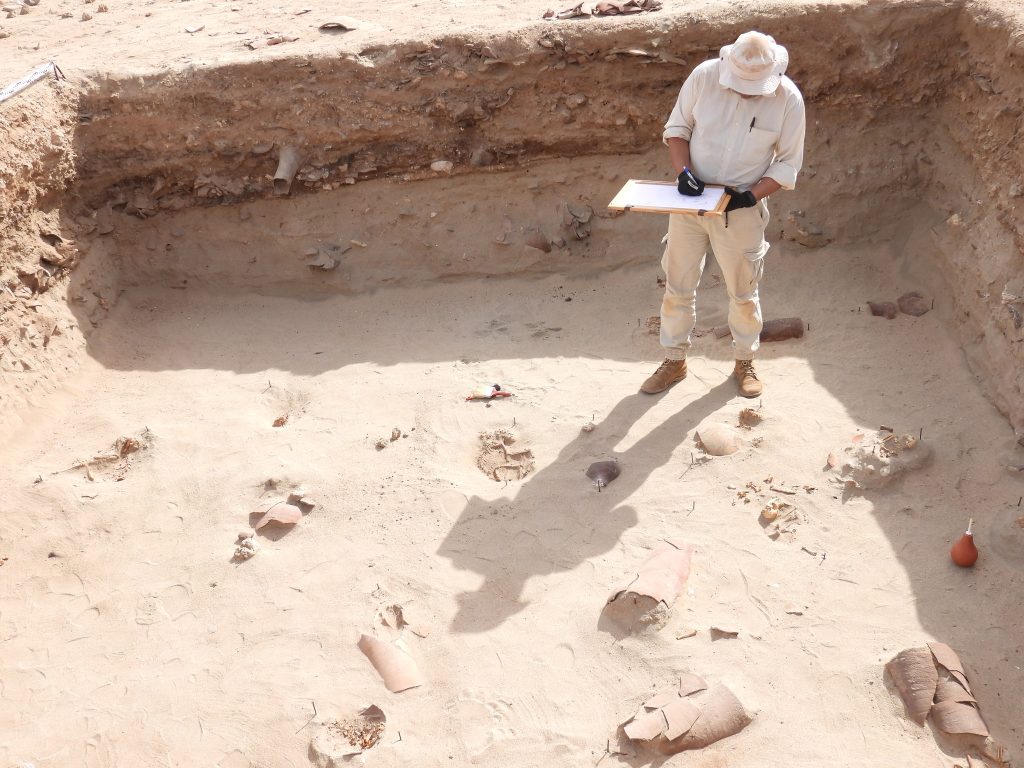Monkeys, a Centurion, and Quo Vadis: Excavations in Egypt’s Berenike
An international team of researchers, led by Professor Marta Osypińska as part of a grant from the UWr and PCMA UW consortium, resumed investigations last season at a unique site in Egypt: the pet cemetery dating to the 1st and 2nd centuries CE in Berenike.
Berenike, situated on the Red Sea coast of Egypt, was an ancient port established by Emperor Tiberius shortly after Egypt’s annexation by the Roman Empire. This emporium became a key intercontinental hub through which luxury goods from India, Asia, Arabia, and East Africa were transported into the empire. Archaeologists have long suspected that the Legio III Cyrenaica was stationed in Berenike—a legion renowned, among other feats, for its role in suppressing the Jewish revolt in Jerusalem in 70 CE.

The pet cemetery investigated by the team led by Marta Osypińska is a unique site in archaeological research. It was established in the early 1st century CE, when members of the Roman elite arrived in the port. In the western suburbium, animals—cats, dogs, and even monkeys—were buried in a manner analogous to human burials, as if they were family members. By the last excavation season, archaeologists had recorded over 500 animal graves within an area of one are, including several monkeys.
The identification of species took several years. Only through 3D documentation of skulls was it possible to precisely determine the presence of two macaque species: the rhesus macaque (Macaca mulatta) and the bonnet macaque (Macaca radiata). Both are native to the Indian subcontinent. Until now, scholars had not suspected that the Romans imported live pets across the ocean. Even today, the logistical challenge of such an enterprise appears impressive.
In the most recent season, Marta Osypińska’s team began excavations in a new location. From the very first day, the discoveries proved to be as unexpected as they were fascinating. Nowhere else has such a concentration of animal burials been recorded. Over the course of two months, within a single 5 × 5 m trench, more than 200 burials were documented. Notably, monkeys, which are rare in other locations, were particularly well represented in this area.

The fact that these monkeys held a “special” status and were treated as “almost” human is reflected in their distinct burial practices, which differed from those of dogs and cats. Only the monkey graves contained grave goods. These were most often objects for play—iridescent shells, cloth scraps, a cow’s tail—but also collars and harnesses. Quite frequently, monkeys were buried alongside their own pets. It seems hardly coincidental that one monkey was buried with a piglet, while young cats often accompanied monkeys in their graves. In one case, the bodies of a grivet and a kitten were carefully arranged to appear as though they were embracing.
For the first time in archaeozoological research, anthropologists were consulted regarding pathologies found in these primates. Analysis of the skulls of two young females revealed pathological changes indicative of malnutrition and anaemia. Among the burials, archaeologists also uncovered an assemblage of unusual refuse: luxurious ceramics from Italy, the Mediterranean, Africa, and India, Roman coins, ostraca, and, most notably, several papyri—priceless sources of information on the ancient inhabitants of Berenike.
The correspondence preserved on the papyri consists of letters from centurions. Names such as Haosus, Lucinius, and… Petronius appear among them. Whether this was the very “arbiter elegantiorum” known from Sienkiewicz’s novel, inquiring with Lucinius, stationed in Berenike, about the prices of luxury goods, remains uncertain. What is known, however, is that these documents date to the time of Nero (!).
The picture emerging from this year’s discoveries is truly fascinating and—rare in archaeology—vividly lifelike. At times, it is difficult to comprehend. How, at first glance, can one reconcile an officer of an ancient “Foreign Legion” with long-haired cats, miniature dogs, and monkeys treated as family members?

As often happens in excavations, on the final day of fieldwork, archaeologists reached the bottom of two large pits. To their surprise, the earliest occupants of the pet cemetery—home to dogs, cats, and monkeys—turned out to be two cattle.
Both had their heads coated with a thick layer of ochre. The elder of the two had its head additionally covered with a large fragment of an amphora. Researchers believe these were foundation sacrifices, possibly dedicated either to the animal necropolis or to a nearby sacred structure.
We hope that next year’s excavations will once again allow us to peer through time into the fascinating and vibrant world of antiquity—one reminiscent of the era depicted in Quo Vadis.
